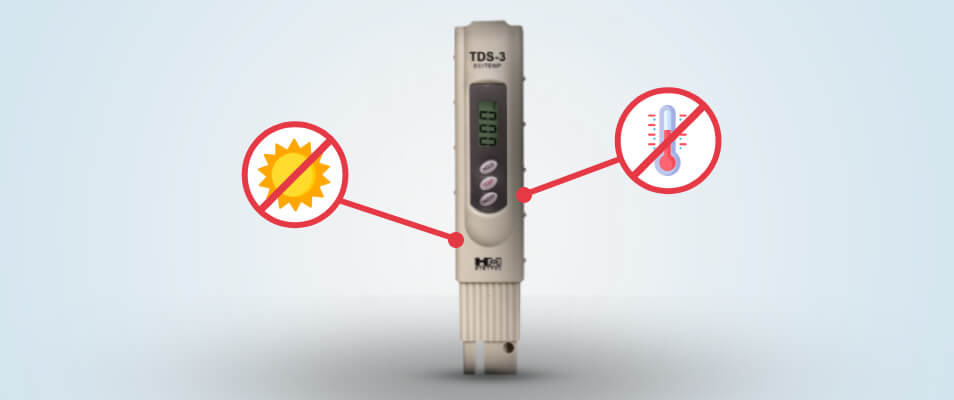- Show results for
- Share
How to Calibrate TDS Tester
Resource Description

TDS testers are, in general, conductivity meters. They are used for applying a voltage between electrodes. Ions that are positively charged will move to the negative electrodes and then the tester determines how much current has passed between these electrodes as a measurements device of how many ions are in the solution sample.
TDS testers are usually used for determining water purity. TDS measurement device will only detect charged ions. These devices won’t identify neutral (uncharged) compounds such as sugar or alcohol and many organics like pesticides and others.
The TDS testers are commonly calibrated in the manufacturing industry, so you don’t need to calibrate them at first. However, it may need the calibration between measuring solution samples.
What is a TDS tester and its features you can find out in our article “What is TDS Tester and What Does It Measure?”
Proper Calibration of the TDS Tester
TDS testers are commonly factory-calibrated and are made to stay consistent. Nevertheless, you may need to recalibrate the tester in process of time, or for certain purposes. TDS testers are the most precise when they are calibrated as close as possible to the solution sample to be measured. If you want to get the most accurate readings, calibrate the device at temperature 77°F (25°C).
To achieve precision and consistency, recalibrate the TDS tester by using a commercial standard solution. The recalibration could be done before the usage and obligatory should be done after the usage. It is recommended to calibrate in the range of 90ppm to 1000ppm for the drinking water.
Step 1:
Take measurements of the TDS level of the solution sample.
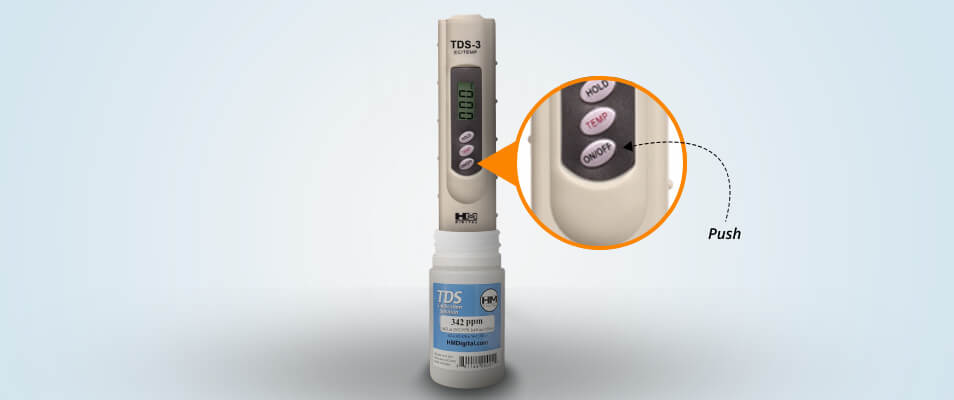
Step 2:
Unless the meter reads within 2% of the sample solution, regulate the reading by using a mini-screwdriver into the trimmer pot. Slowly and gently turn the trimmer clockwise to boost the reading or counterclockwise to lessen the reading.
- Be sure that the screwdriver is fixed evenly into the groove of the screw.
- Notice the trimmer port is sensitive, that is why you should remove the screwdriver gently and carefully.
- It is recommended to keep the TDS tester vertically.
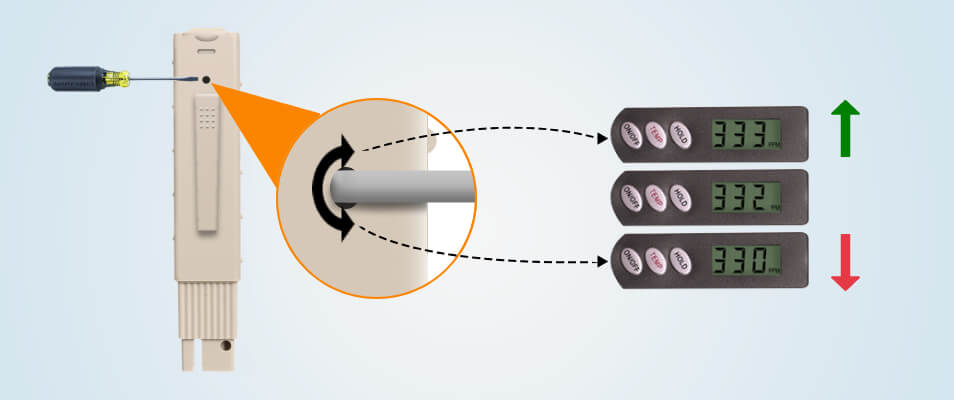
Step 3:
If the TDS tester makes measurements within 2% of the sample solution, slowly lessen the pressure on the screwdriver and remove it from the trimmer pot.
- If the screwdriver has withdrawn suddenly, the measurement reading of the TDS tester may jump.
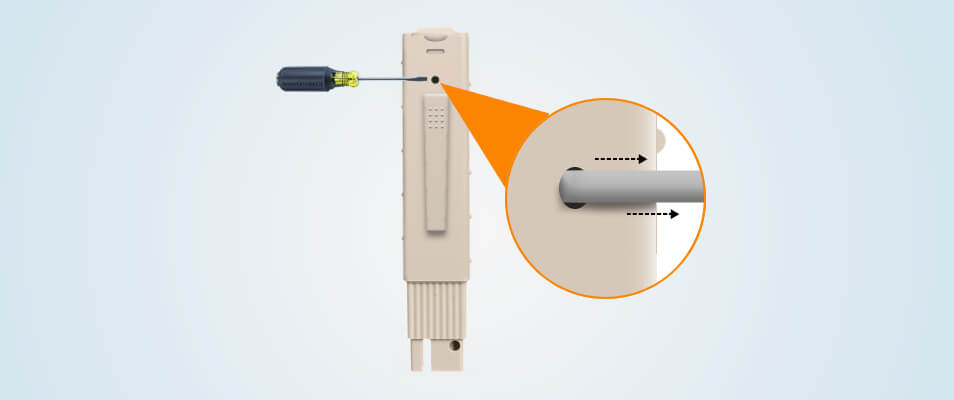
Step 4:
With the TDS tester in the solution sample and the measurement reading at the proper level, push the “HOLD” button. Allow the measurement reading to be held for almost 10 seconds to stabilize.

Step 5:
Remove the TDS tester from the solution sample. Shake the device to remove any water drops that may be on it to prevent the creation of air gaps and inaccuracy during the next measurements.
- Water or air gaps may cause TDS meter damages and display incorrect measurement readings.
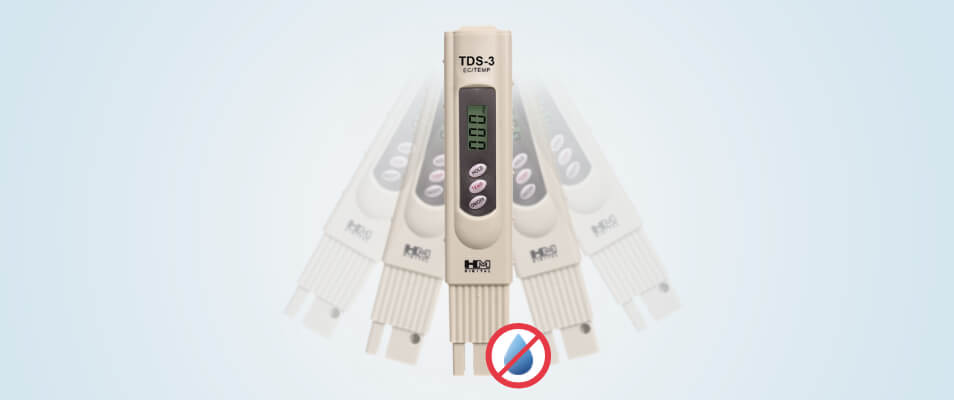
Step 6:
Switch the TDS tester off, wait some time and switch it on again.
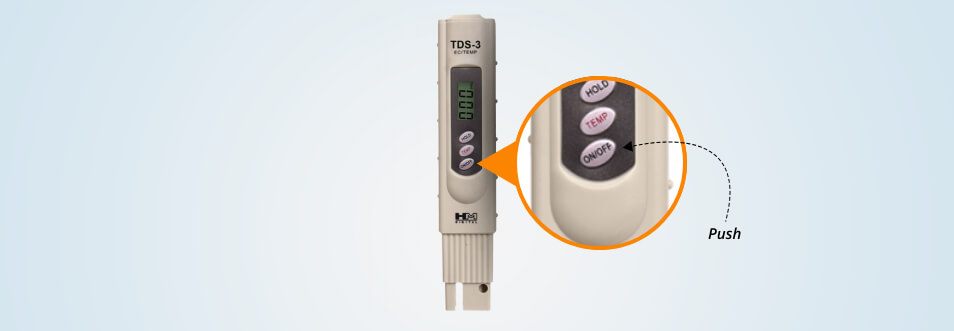
Step 7:
Immerse the TDS meter into the solution and wait till the measurement reading becomes stable. If you get a precise reading, the calibration of the TDS tester is completed. If the reading is not accurate, repeat the procedure one more time.

However, not all the TDS testers have the trimmer pot, that is why there is another way to calibrate the device.
How to Calibrate the TDS Tester In Other Way
Step 1:
Take the TDS tester and press the “ON” button.
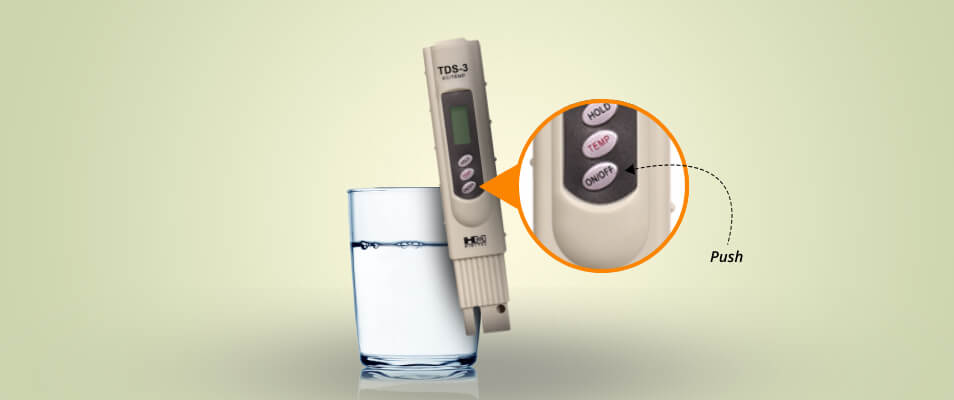
Step 2:
Pull the TDS tester electrodes into the water and light shake for several seconds. It will help you to remove any air bubbles to achieve precise results.

Step 3:
After that, press the “HOLD” button. This will allow the TDS measurement readings to be held and allow you to read the measurements outside of the water.
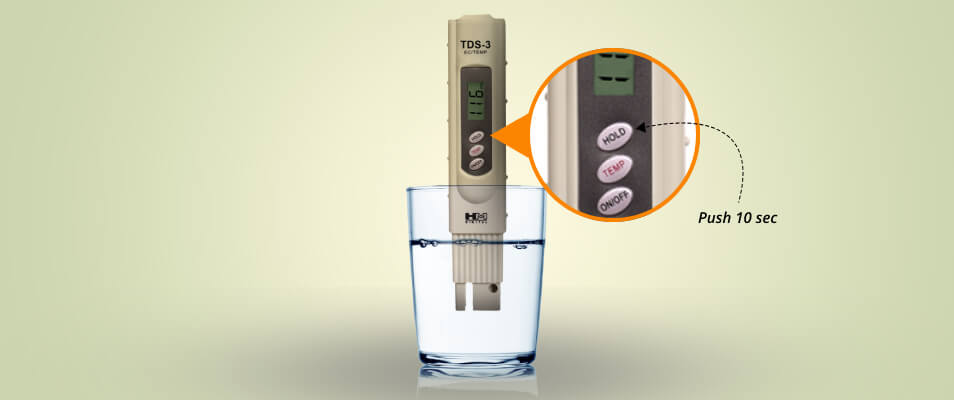
Step 4:
Then, remove the TDS tester from the water.
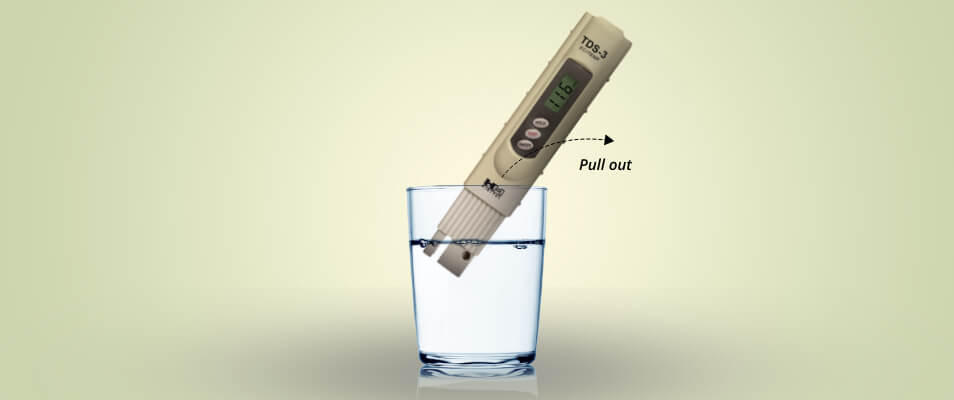
Step 5:
In the picture below, you may see that the measurement readings are equal to 116 ppm. Wait for 20 seconds until the reading will stabilize.
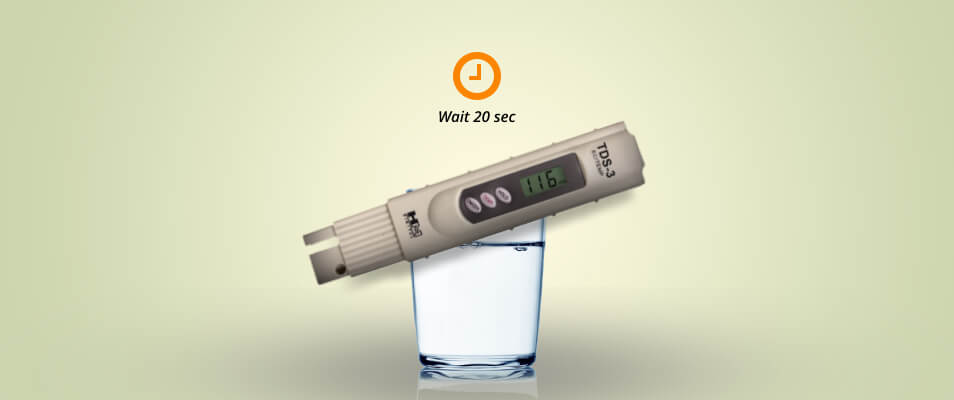
Tips For Proper Usage of The TDS Tester
Step 1:
Completely immerse the TDS meter's electrodes into the water or sample solution to achieve the maximum immersion level.

Step 2:
Lightly shake the TDS meter to prevent and remove any air bubbles. Air bubbles between the electrodes may disturb the proper work of the device.
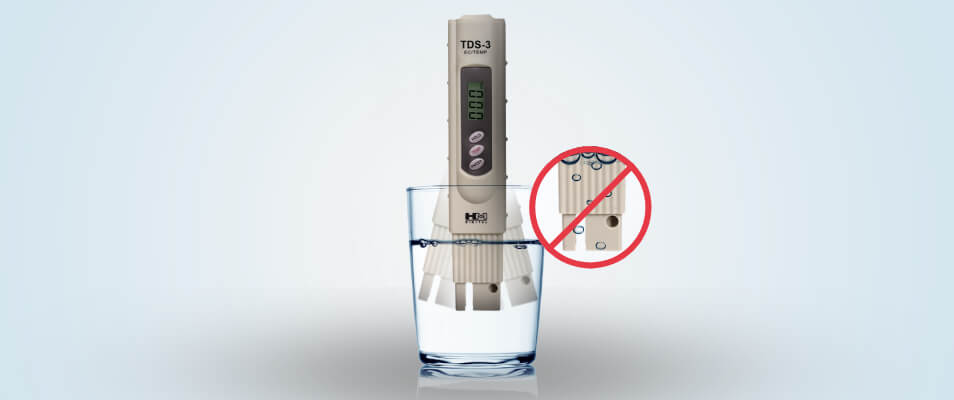
Step 3:
Wait until 10-20 seconds for the measurement reading to become stable. If you immerse the tester in hot or ice-cold water, you should wait 20-30 seconds until the TDS tester compensates for temperature. When the water will get room temperature, the measurement reading will change to adapt to the proper compensation.
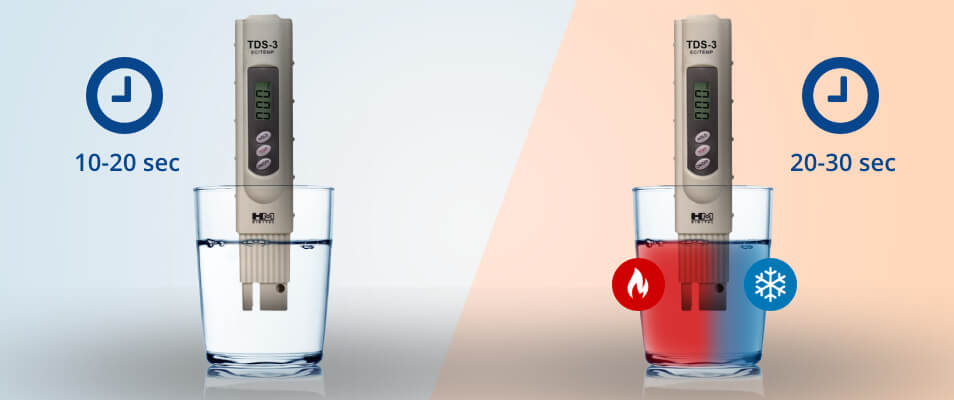
Step 4:
To get greatest precision, switch the tester off and on for every time you make measurements.

Step 5:
Clean the TDS tester after each measurement usage. It will help to prevent any droplets of water that could stick to the surface that is between the sensors, thus providing wrong measurement results.
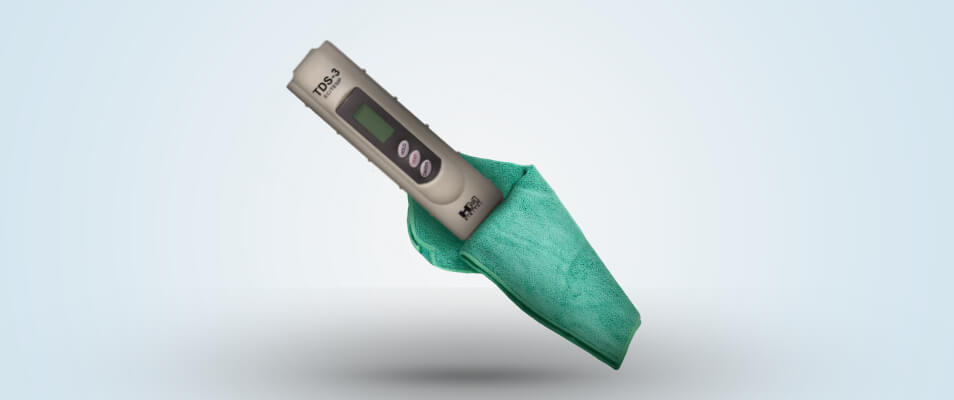
Step 6:
Rinse the TDS tester with distilled water after each use for getting more accurate results.
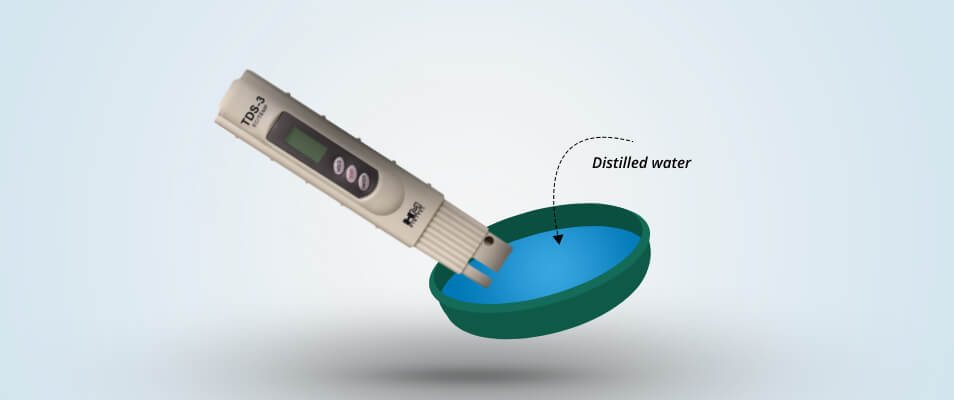
Step 7:
Rinse the TDS tester in acid or alcohol after use in high-TDS solutions.
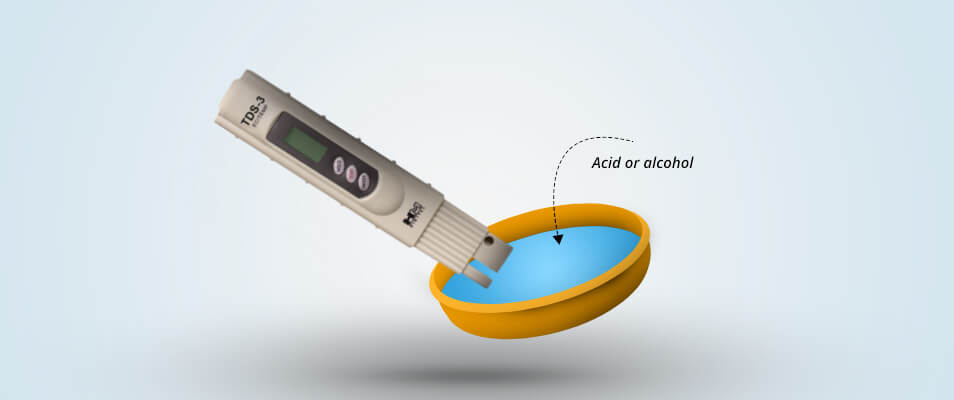
Step 8:
Don’t immerse the tester’s unit in water, because the tester is not waterproof.
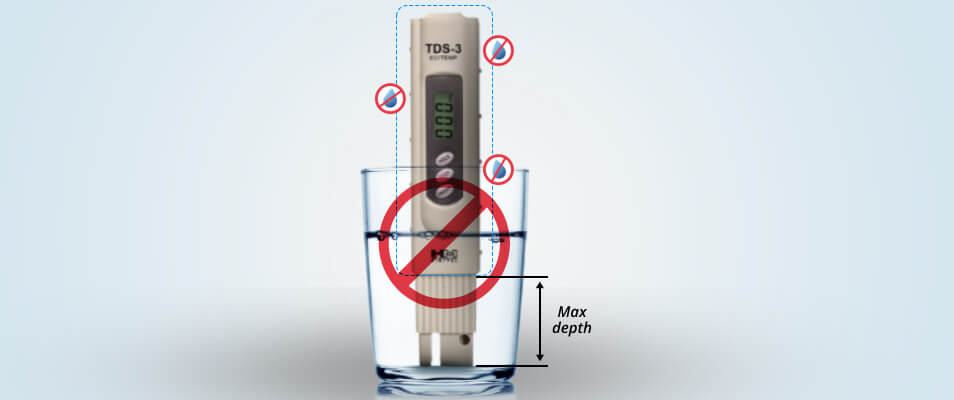
Step 9:
The TDS tester shouldn't be stored in high temperatures or direct sunlight places.
